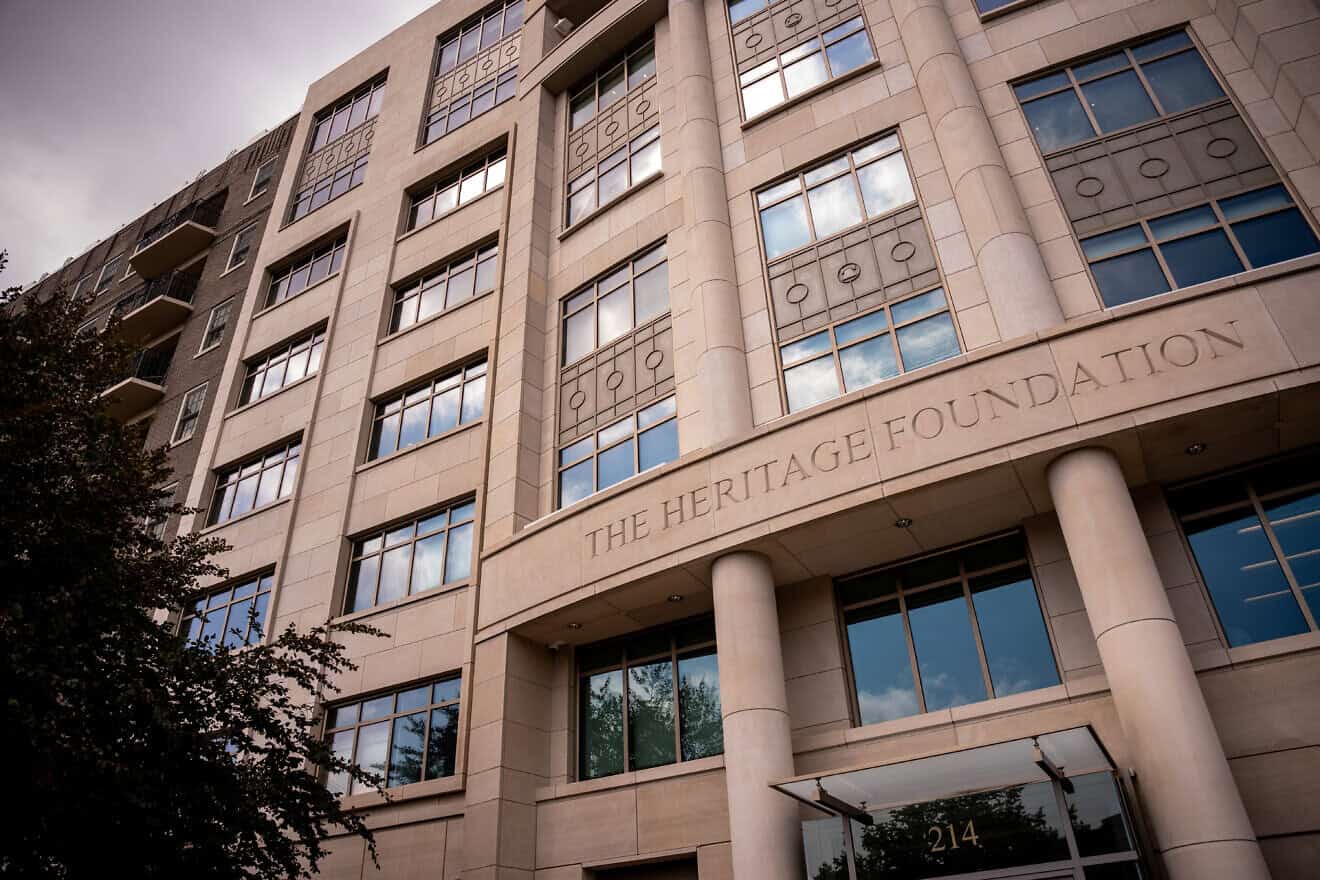 Ludobójstwo Ormian. Według współczesnych obliczeń tureckich, w latach 1915–1917 zginęło 972 tysiące osób. Ormianie natomiast liczbę ofiar szacowali na 1,5 miliona osób. Na zdjęciu: Ormiańscy cywile eskortowani przez tureckich żołnierzy prowadzeni do więzienia w dzisiejszym Elazığ (1915) (Źródło zdjęcia: Wikipedia, Autorstwa Armin T. Wegner)
Ludobójstwo Ormian. Według współczesnych obliczeń tureckich, w latach 1915–1917 zginęło 972 tysiące osób. Ormianie natomiast liczbę ofiar szacowali na 1,5 miliona osób. Na zdjęciu: Ormiańscy cywile eskortowani przez tureckich żołnierzy prowadzeni do więzienia w dzisiejszym Elazığ (1915) (Źródło zdjęcia: Wikipedia, Autorstwa Armin T. Wegner)
 Inwersja ludobójstwa i atak na naród żydowski z punktu widzenia kozła ofiarnego
Inwersja ludobójstwa i atak na naród żydowski z punktu widzenia kozła ofiarnego
Adam Louis-Klein
Tłumaczenie: Małgorzata Koraszewska
Na Zachodzie klasa aktywistów-uniwersytetów-NGO nieustannie pracuje nad wypychaniem Żydów z życia publicznego, chyba że wyrzekną się związku ze swoją ojczyzną przodków i ludźmi, którzy tam mieszkają. Żydzi są zmuszani do wyrzeczenia się swojej zbiorowej tożsamości, zdefiniowania siebie na nowo jako „Białych” i zaprzeczenia swojemu statusowi odrębnego i rdzennego ludu. Jest to współczesna forma przymusowej asymilacji — taka, która nawiązuje do historycznych przymusowych konwersji, jakich Żydzi doświadczali przez stulecia zarówno pod rządami imperiów chrześcijańskich, jak i islamskich. Wtedy, tak jak i teraz, żydowska odrębność jest traktowana jako nie do zniesienia afront wobec uniwersalizujących ideologii.
Równocześnie Iran, Bractwo Muzułmańskie i milicje dżihadystyczne otwarcie dążą do fizycznego zniszczenia Izraela i narodu żydowskiego. Siły te działają w tandemie: kulturowe wymazanie na Zachodzie, fizyczne unicestwienie na Wschodzie. A w centrum tego wszystkiego znajduje się ten sam powtarzający się cel — żydowska odrębność — teraz wygodnie nazywana „syjonizmem”, zastępująca rzeczywistość narodu żydowskiego i prawo Żydów do otwartego życia jako jeden z wielu narodów.
Dlatego ciągłe oskarżenia Izraela o „ludobójstwo” – wykorzystywane do demonizowania każdego Żyda, który odmawia zerwania więzi ze swoim narodem jako tzw. „zwolennik ludobójstwa” – nie są zwykłym kłamstwem. Są bronią polityczną, częścią szerszego projektu antysemickiego wykluczenia. Oskarżenia te nie są odosobnionymi stwierdzeniami, które należy analizować w oderwaniu od kontekstu; działają jako mechanizmy kontroli społecznej, wymuszając marginalizację Żydów w życiu kulturalnym, akademickim i zawodowym, chyba że publicznie odrzucą swoją narodowość i zerwą swoje historyczne i emocjonalne więzi z Izraelem.
Dyskurs ten funkcjonuje w logicznym błędnym kole. Nie chodzi o treść żadnego pojedynczego twierdzenia, ale o formę samego dyskursu: samonapędzający się system, który zamyka krytyczne dociekania i karze sprzeciw przez panikę moralną i publiczne zawstydzanie. Nie możemy pozwolić, aby przytłoczył nas lub zdemoralizował ten niekończący się potok oskarżeń, który nie wynika z autentycznej troski o prawdę, ale z strategii eskalacji zniesławienia. Zamiast tego musimy nauczyć się rozpoznawać strukturę tego dyskursu, obnażyć system, który go generuje, i odmówić pozwolenia na wciągnięcie nas w jego pułapkę — omijać jego sfabrykowane kryzysy moralne i trzymać się mocno klarowności własnych zobowiązań.
W tym samym czasie uniwersalizm prawa międzynarodowego — zrodzony częściowo z pamięci o Holokauście — został wypaczony i zamieniony w broń przeciwko tym samym ludziom, których cierpienie pomogło je stworzyć. Zamiast przejść od szczególnego doświadczenia Holokaustu do autentycznego, zasadniczego, uniwersalnego zainteresowania ludobójstwem, uniwersalność ta została wypaczona i obrócona przeciwko samym Żydom. Jesteśmy świadkami dialektycznej inwersji: języka praw uniwersalnych używanego właśnie po to, aby odmówić narodowi żydowskiemu prawa do istnienia.
Najsilniejszym wyrazem retorycznym tej inwersji jest język antykolonializmu, w którym oskarżenie Izraela o ludobójstwo nie jest przedstawiane jako twierdzenie wymagające dowodów, lecz jako oczywista prawda wywodząca się z szerszych ram antykolonialnych.
A jednak także ta inwersja opiera się na niebezpiecznym historycznym uproszczeniu. Rozmowę o kolonializmie i ludobójstwie uwięziono w wąskich ramach, które pozwalają na postrzeganie tych zjawisk niemal wyłącznie przez pryzmat europejskiego imperializmu. W rezultacie znikają lub otrzymują usprawiedliwienie inne formacje imperialne — i ich długie historie podbojów, dominacji i ludobójstwa. Jednak żadne poważne, uczciwe rozliczenie się z globalną historią ludobójstwa nie może uniknąć konfrontacji z imperialnym dziedzictwem islamizmu i jego trwającymi konsekwencjami dla rdzennych i mniejszościowych ludów na całym Bliskim Wschodzie i poza nim.
Ludobójstwo Ormian jest tego jaskrawym przykładem. Ten dalece nie odosobniony wybuch nacjonalistycznej przemocy przeprowadzono pod sztandarem imperialnej ideologii islamistycznej, która łączyła religijną supremację z imperialnymi ambicjami. Imperium Osmańskie w ostatnich dziesięcioleciach swojego istnienia starało się odzyskać kontrolę nad rozbitymi terytoriami przy pomocy ideologii panislamizmu — ogłosiło dżihad i mobilizowało muzułmańską populację przeciwko mniejszościom chrześcijańskim, najbardziej brutalnie przeciwko Ormianom, ale także atakując Asyryjczyków, Greków i inne rdzenne ludy chrześcijańskie regionu. To ludobójstwo nie było po prostu produktem nacjonalizmu etnicznego; było napędzane przez imperialną islamską wizję religijnego i terytorialnego oczyszczenia.
Pełna i uczciwa analiza relacji między kolonializmem a ludobójstwem zbadałaby te wymiary imperializmu islamistycznego — zarówno historyczne, jak i współczesne. Zadałaby pytanie, dlaczego trwające prześladowania i wymazywanie mniejszości na Bliskim Wschodzie — Jazydów, Asyryjczyków, Koptów, Kurdów i oczywiście Żydów — są tak często pomijane w globalnej dyskusji na temat kolonializmu i ludobójstwa. Zmierzyłaby się z rzeczywistością, że na długo przed przybyciem europejskich mocarstw kolonialnych wiele z tych rdzennych i etniczno-religijnych ludów cierpiało już pod islamską dominacją imperialną, przymusowymi nawróceniami i przesiedleniami. I uznałaby, że ten historyczny wzorzec trwa do dziś w współczesnych ruchach islamistycznych, które otwarcie dążą do przywrócenia dominacji imperialnej pod pozorem walki religijnej lub antykolonialnej.
Taka analiza podważyłaby również założenie, że ludobójstwo jest przede wszystkim produktem ubocznym współczesnego nacjonalizmu państw narodowych. W rzeczywistości często to nacjonalizmy imperialne — projekty ideologiczne, które łączą ekspansywne ambicje imperium z gwałtownym dążeniem do kulturowej, religijnej lub etnicznej jednorodności — były najbardziej niszczycielskimi motorami ludobójstwa. Osmańska wizja oczyszczonego imperium islamskiego, projekt nazistowskich Niemiec rasowo czystej Rzeszy i współczesne ruchy islamistyczne marzące o globalnym kalifacie — wszystkie dzielą tę imperialistyczną strukturę. Nie są to nacjonalizmy obronne lub lokalne, ale ekspansywne, totalizujące wizje, które dążą do dominacji i wymazania całych narodów w służbie swoich ideologicznych celów.
Nie należy zatem wpychać ludobójstwa do uproszczonej narracji ofiar kolonializmu ani wiązać go wyłącznie z dziedzictwem zachodniego imperializmu. Nie należy również redukować kolonializmu do czysto europejskiego zjawiska. Jeśli traktujemy poważnie uniwersalną sprawiedliwość, musimy skonfrontować się z wszystkimi kolonialnymi formacjami – chrześcijańskimi, islamskimi i innymi – które budowały swoją potęgę na podboju, asymilacji i unicestwianiu podbijanych narodów. I musimy przyznać, że ludobójcze ideologie czasów dzisiejszych nie są ograniczone do nacjonalistycznej prawicy, ale są żywe i rozkwitają w imperialnych ambicjach ruchów islamistycznych, które obrały Żydów i inne rdzenne ludy na Bliskim Wschodzie jako obiekty do unicestwienia.
W wyniku wyrafinowanej interakcji manipulacji medialnych, aktywizmu organizacji pozarządowych i poparcia akademickiego jesteśmy świadkami pełnej integracji tego antyżydowskiego projektu ideologicznego z samym sercem zachodniego dyskursu. To nie jest przypadek. Po II wojnie światowej, podczas gdy Europa przechodziła intensywny proces denazyfikacji, znaczna część ideologicznej machiny nazizmu znalazła schronienie i ciągłość na Bliskim Wschodzie, szczególnie za pośrednictwem postaci takich jak Wielki Mufti Jerozolimy i zakorzenienia się nazistowskiej propagandy w politycznych kulturach świata arabskiego. Wielki Mufti, Hadż Amin al-Husseini, spotkał się z Hitlerem, współpracował z SS i nadawał pro-nazistowską, antysemicką propagandę radiową do świata arabskiego. Jego ideologiczni spadkobiercy to Bractwo Muzułmańskie, którego połączenie politycznego islamu i antysemityzmu położyło podwaliny pod grupy takie jak Hamas — którego statut założycielski cytuje Protokoły mędrców Syjonu. Po II wojnie światowej wybitny nazistowski propagandysta Johann von Leers uciekł do Kairu, nawrócił się na islam i pomógł założyć ośrodek poświęcony agitacji antysyjonistycznej, łącząc nazistowskie spiski z myślą islamistyczną. Protokoły i podobne teksty krążyły szeroko wśród grup islamistycznych i panarabskich, tworząc podwaliny powojennej ideologii antysyjonistycznej.
Podstawą dzisiejszej retoryki ludobójczej jest niebezpiecznie uproszczony i abstrakcyjny sylogizm, który obecnie krąży niemal bez sprzeciwu w środowiskach aktywistów, naukowców i polityków:
„Każdy kolonializm jest ludobójstwem; Izrael jest państwem kolonialnym; zatem Izrael dopuszcza się ludobójstwa”.
Ta formuła jest przedstawiana z siłą moralnej pewności, ale załamuje się nawet przy najbardziej podstawowej analizie. Jej prostota jest właśnie tym, co czyni ją tak uwodzicielską i tak niebezpieczną — redukuje historię do zestawu abstrakcyjnych kategorii, spłaszcza złożone realia polityczne i zastępuje konkretną analizę ideologicznym rozumowaniem a priori. Zamiast badać konkretne fakty, postępuje poprzez dedukcję z przesłanek, które same są historycznie i koncepcyjnie wadliwe.
Pierwsza przesłanka — „Cały kolonializm jest ludobójstwem” — jest sama w sobie wypaczeniem. Podczas gdy kolonializm niewątpliwie obejmował epizody ludobójstwa, nie wszystkie projekty kolonialne prowadziły do ludobójstwa lub skutkowały nim. Całkowite utożsamianie tych dwóch zjawisk oznacza wymazanie ważnych historycznych rozróżnień i pozbawienie pojęcia ludobójstwa jego specyfiki i analitycznej jasności. Ludobójstwo jako formalnie zdefiniowane przestępstwo obejmuje celowy zamiar zniszczenia narodu jako takiego — coś znacznie bardziej konkretnego niż szeroka, często wyzyskująca, ale niekoniecznie unicestwiająca dynamika reżimów kolonialnych. Podczas gdy kolonializm i ludobójstwo mogą z pewnością występować razem, nie są identyczne.
Druga przesłanka — „Izrael to państwo kolonialne” — jest po prostu fałszywa. Opiera się na celowym błędnym scharakteryzowaniu syjonizmu jako obcego, kolonialno-osadniczego ruchu narzuconego Bliskiemu Wschodowi przez mocarstwa zachodnie. Ignoruje to podstawowy fakt historyczny i antropologiczny, że naród żydowski jest rdzenny dla Ziemi Izraela, z nieprzerwaną kulturową, religijną i historyczną więzią z tą ziemią sięgającą tysiącleci.
Syjonizm nie jest wyrazem europejskiej ekspansji kolonialnej — jest ruchem powrotu rdzennej ludności, ruchem wyzwolenia narodowego odpowiadającym na stulecia przymusowego wygnania, prześladowań i wywłaszczenia. Przedstawianie Żydów jako kolonialnych najeźdźców w ojczyźnie ich przodków oznacza całkowite odwrócenie rzeczywistości, wymazanie historii żydowskiego przetrwania i powrotu na rzecz wygodnej politycznie fikcji. Jak pokazał Ben M. Freeman, Żydzi spełniają wszystkie istotne kryteria rdzenności: ich etnogeneza miała miejsce w Ziemi Izraela; ich rytualne i kalendarzowe życie jest związane z jej ekologicznymi rytmami i porami roku; ich zbiorowa tożsamość i pamięć przodków są zakorzenione w tym konkretnym terytorium; a ich przywiązanie do ziemi trwa od tysiącleci, pomimo rozproszenia i wygnania. Jeśli te standardy dotyczą innych — i słusznie — muszą dotyczyć również Żydów. Zaprzeczanie temu nie jest intelektualnym rygorem, ale polityczną wybiórczością.
Co więcej, ta ideologiczna rama rozkwita właśnie dlatego, że wpisuje się w głęboko narcystyczną formę zachodniej samokrytyki — takiej, która koncentruje się na moralnych niedociągnięciach Zachodu, a jednocześnie, paradoksalnie, przedstawia Żydów zarówno jako wiecznych outsiderów, jak i najwyższe symbole zachodniej winy. W tym schemacie „Biały Żyd” staje się kozłem ofiarnym par excellence, tym, który musi dźwigać ciężar kolonialnych grzechów, które nie mają nic wspólnego z historią Żydów, ale wszystko z potrzebą Europy do samorozgrzeszenia. Żyd jest jednocześnie wyrzucony jako ciało obce i potępiony jako uprzywilejowany insider, wiecznie uwięziony w tej podwójnej pułapce.
To nie jest analiza — to moralizatorska abstrakcja, która zamienia w broń zarówno język dekolonizacji, jak i pamięć o ludobójstwie, nie po to, by zapobiec ludobójstwu, ale by usprawiedliwić i ukryć nowe formy antysemickiego wykluczenia, a w przypadku Izraela — otwarcie wyrażane fantazje o zagładzie.
To jest rzeczywistość, z jaką się mierzymy: ideologiczny i instytucjonalny atak, który działa w każdym rejestrze — prawnym, politycznym, akademickim i kulturowym — aby odizolować, delegitymizować i ostatecznie wymazać żydowską odrębność. Bierze strategie bitewne ludobójczych grup za granicą i przepakowuje je jako moralne imperatywy na Zachodzie. Obraca prawo międzynarodowe, zrodzone z horrorów Holokaustu, przeciwko jego twórcom. Ożywia widma zarówno chrześcijańskich, jak i islamskich ideologii imperialnych, wymazuje żydowską rdzenność przez fałszywe narracje historyczne i zamienia w broń koncepcje takie jak kolonializm i ludobójstwo, by użyć ich do uczynienia Żydów unikatowo winnym narodem wśród cnotliwych narodów.
Przez oskarżenia zbudowane na logice błędnego koła i zamknięte dyskursy antysyjonizm tworzy środowisko społeczne, w którym Żydzi są akceptowani tylko pod warunkiem, że zaprzeczą samym sobie — tylko jeśli odrzucą swoją narodowość, swoją historię i swoje żywe więzi z Izraelem. A gdy odmawiają, są potępiani nie tylko jako działający niesłusznie, ale jako z natury źli — jako zwolennicy ludobójstwa, najbardziej niewybaczalnej zbrodni, jaką można sobie wyobrazić. To nie jest debata nad abstrakcyjnymi koncepcjami; to celowy atak na polityczne, kulturowe, a nawet fizyczne istnienie narodu żydowskiego. I nie skończy się na Izraelu.
W gruncie rzeczy antysemityzm konstruuje dwie sprzeczne rzeczywistości: jedną narzuconą Żydom i drugą, w której mówi się bez końca o Żydach — ale rzadko z nimi. Maleńka, często niewidoczna mniejszość zostaje symbolicznie rozdmuchana do źródła wszelkich sprzeczności społecznych, a kiedy Żydzi mówią — kiedy domagają się uznania ich historii lub bronią swojej narodowości — ich głos nie jest akceptowany, ale traktowany z podejrzliwością.
Tę dynamikę wzmacniają mechanizmy inwersji ludobójstwa, które opisaliśmy tutaj. Dla społeczeństw nieżydowskich obraz Żyda jako ostatecznej ofiary Holokaustu jest niewygodnym symbolem absolutnego cierpienia, który nakłada nierozwiązywalny dług moralny. Jednak ten sam obraz jest w konflikcie z głęboko zakorzenioną tendencją do przedstawiania Żydów jako postaci władzy, bogactwa i ukrytej kontroli. Oskarżenie Izraela o ludobójstwo funkcjonuje jako reakcja na to nierozwiązane napięcie. Rozładowuje ciężar empatii wobec ofiar Holokaustu przez inwersję samych ofiar — przekształca Żydów z paradygmatycznych ofiar ludobójstwa w jego domniemanych sprawców. Żydzi pojawiają się wtedy albo jako absolutne ofiary, albo jako absolutni złoczyńcy, ale nigdy jako zwykli ludzie w całej ich złożoności i człowieczeństwie.
A jednak, mimo wszelkich prób wymazania nas — poprzez przymusową konwersję, przymusową asymilację lub całkowitą eksterminację — naród żydowski trwa, odrębny i żywy, odmawiając zniknięcia. To również jest częścią naszej historii — historii przetrwania, odporności i powrotu. I to właśnie ta historia — niezaprzeczalny dowód, że naród może przetrwać wbrew największym przeciwnościom — jest tym, co najbardziej pragną wymazać. Dlatego w obliczu tych nacisków musimy podjąć pracę wewnętrznej jasności, trzymając się mocno tego, kim jesteśmy i odmawiając pozwolenia innym na definiowanie naszej historii, naszej tożsamości lub naszej przyszłości.
Adam Louis-Klein jest doktorantem antropologii na Uniwersytecie McGill, bada antysemityzm, narodowość i porównawcze zmagania o rdzenność i historyczną przynależność. Regularnie pisze na te tematy na Facebooku, gdzie bada struktury ideologiczne napędzające współczesną wrogość wobec Żydów i globalny atak na narodowość żydowską.
Zawartość publikowanych artykułów i materiałów nie reprezentuje poglądów ani opinii Reunion’68,
ani też webmastera Blogu Reunion’68, chyba ze jest to wyraźnie zaznaczone.
Twoje uwagi, linki, własne artykuły lub wiadomości prześlij na adres:
webmaster@reunion68.com





